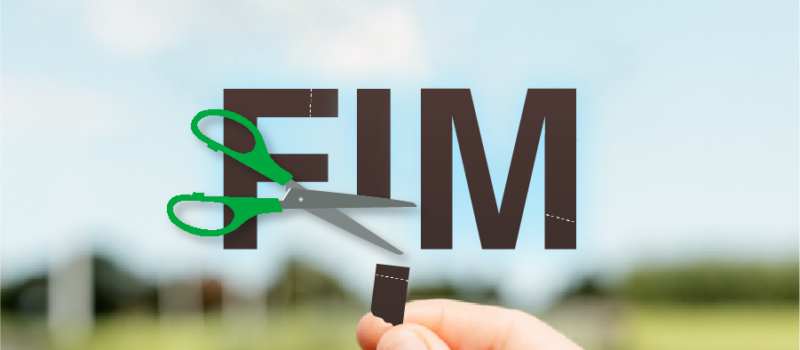Ever heard of ‘fimming’? If you haven’t, FIM or fimming is a popular technique used to maximimize your cannabis harvest. The technique actually evolved from the mistakes made by growers over the years. Fimming cannabis is a lot like the technique known as ‘topping’, only at a slightly different part of the plant. That makes it seems as if you’ve cut in the wrong place, which is why ‘FIM’ subtly stands for “F#ck, I Missed!”. And what do you say when that happens? Exactly: that’s when you shout “FIM!!”
Table of Contents
Fimming: Topping Cannabis, Only Different
If fimming came about by mistake, then this is a mistake that we can learn a lot from. A happy accident, so to speak. The FIM technique is certainly worth getting familiar with, so you can apply it to your own grow. It’s not difficult, exactly, but timing and the right tools are critical to getting it right.

Fimming is very similar to topping your weed plants, but here a number of important differences between the two. So pay close attention, because if done correctly, fimming can increase your crop’s harvest considerably. It’s also a great way to keep your weed from growing into a tall Christmas tree shape. If done right, a FIM or two will encourage plants to grow new branches pointing sideways. That’s often preferable over than shooting up to the roof of your grow tent or peek over the fence and flirt with the neighbors.
How Does Fimming Work?
As mentioned, fimming is very much like the topping technique, in which you prune away parts of your plant to get better overall results. The main difference between the two is the exact spot where you place the shears to make the cut.
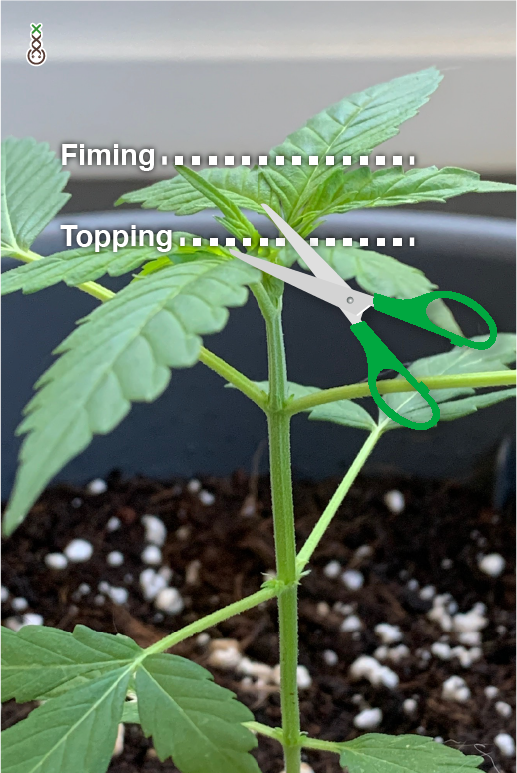
Timing: Only FIM In The Growth Stage
Fimming is meant for the growth or vegetative stage of your cannabis plant’s life cycle, once it has passed through the germination and seedling stages. Once your weed plant starts to flower, fimming will only stress and damage your plant beyond any hope of producing a serious harvest.
If you plan to FIM cannabis plants, wait for them to have sprouted at least three nodes with branches and leaves. As you can see, timing is important here.
Basically, what you do in fimming is cut the growth tip at the top of your plant. As you cut through the top section, your shears slice through the main growth tip. As a result, you don’t get just two new growth tips as you would with topping, but up to four new ones instead.
Fimming also promotes extensive growth further down the plant, encouraging development of lateral branches and new shoots. This makes for a denser plant canopy, further adding to harvest yields.
What Fimming Does For Your Grow
With fimming, you train or encourage your cannabis plant to produce denser canopies, as one growth tip is cut producing two or even four new branches growing sideways, or laterally. A full canopy is good for a number of reasons, but each of these has to do with efficient growing.
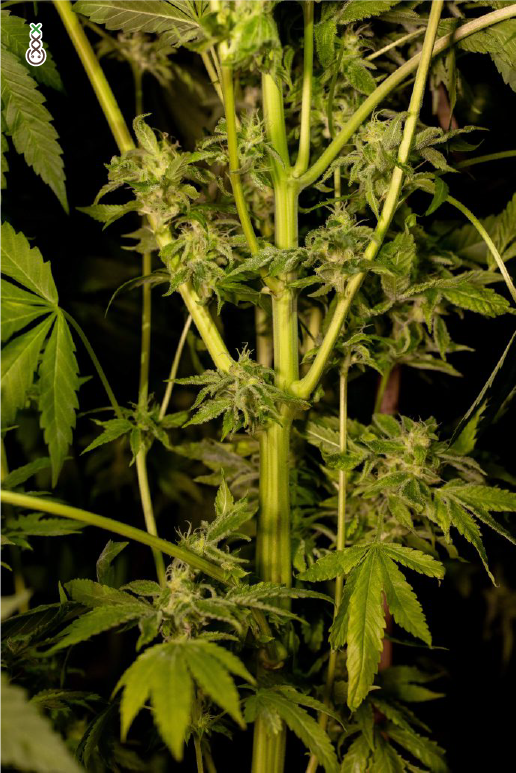
If you leave it up to your plant, the top of the plant is where most of its (upward) growth occurs. The grow tip at the very top of the stem is packed with growth hormones known as auxins. Auxins make sure that most of a weed plant’s energy is directed to that top tip, causing it to reach for the sky. That’s useful for a plant growing in the wild: the faster you grow taller than your neighbors, the more precious sunlight you can catch. Growing cannabis in a grow room, tent, or low-profile backyard project is a different matter, though.
Broad Plants; Lots Of Buds
Growing broad is often better than growing tall here for two reasons. One is to stay ‘below the radar’ and remain easy to manage. This comes with the added benefit of a more evenly distributed canopy, which can make better use of the lighting available .The second reason is buds. Lots of buds. As with the topping technique, more lateral growth and more branches means more room for extra buds to harvest.
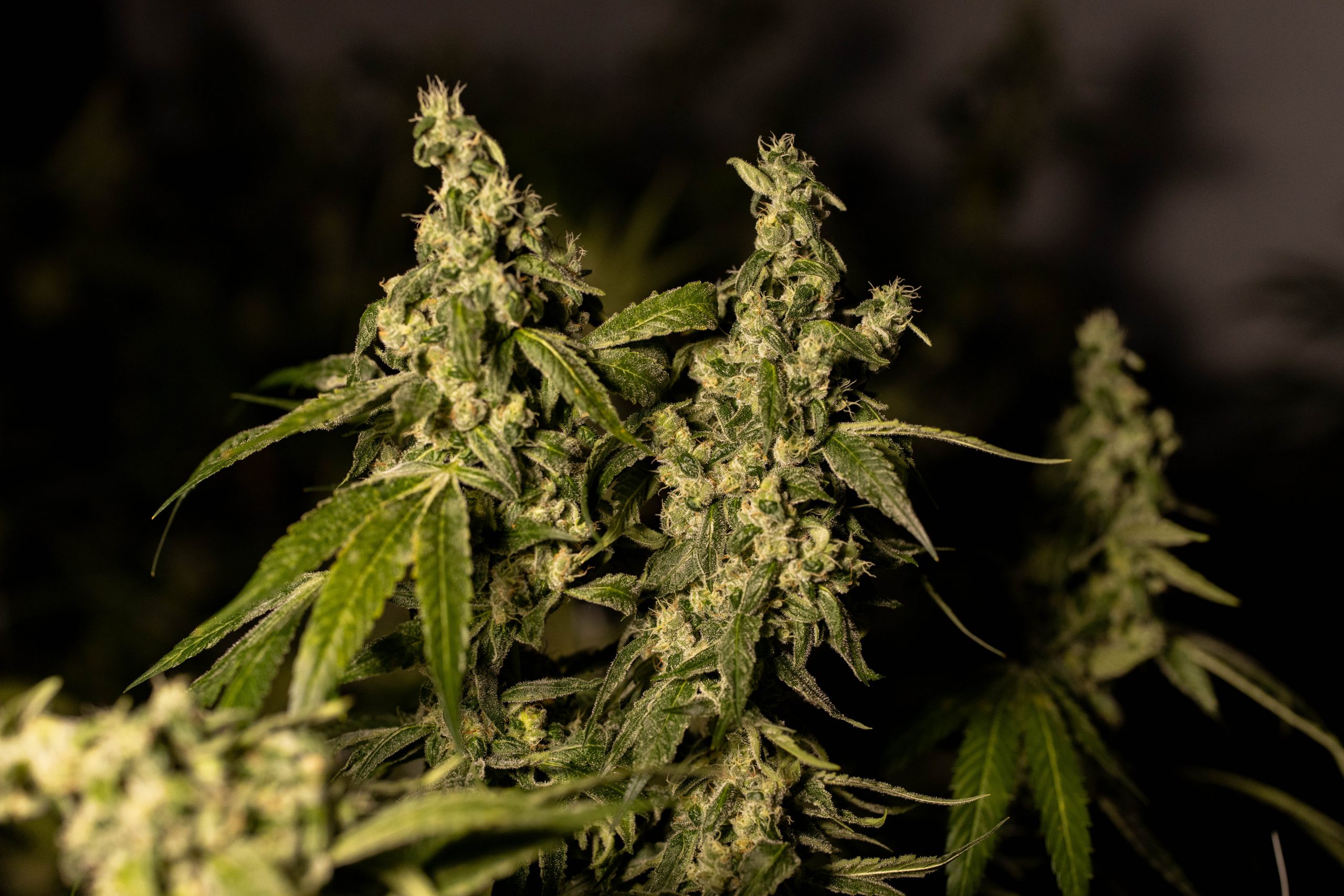
FIM cuts away the biggest part of the growth tip, damaging it on purpose (though if you like, you can still yell “F#ck I Missed” to make it look like an accident). That causes the plant to scramble and redirect auxins to its other growth tips further down. After a few days, you should find that your cannabis starts to grow in new directions.
With the ‘why’ out of the way, we’ll now turn to the ‘how’ of fimming.
How To ‘FIM’ Your Cannabis Plant?
Fimming can lead to varying results. Since it is pretty hard to FIM exactly right, the effect can differ depending on the accuracy of your cut and the fluidity of your pruning technique.
FIM makes your plants grow in a bushy structure supporting multiple buds, although the exact outcomes can be difficult to control completely. Generally speaking, creating four new growth tips is considered the best outcome, although some growers manage to produce even more. However, in some cases, less new tips emerge after you cut your plant.
Fimming cannabis always entails a risk of stressing your plants, possibly making them turn into hermaphrodites. Moreover, plants easily get infections after fimming, which are usually not so easy to stop. Here, prevention is better than cure, which is why we advise to always use sterile cutting tools when fimming cannabis.
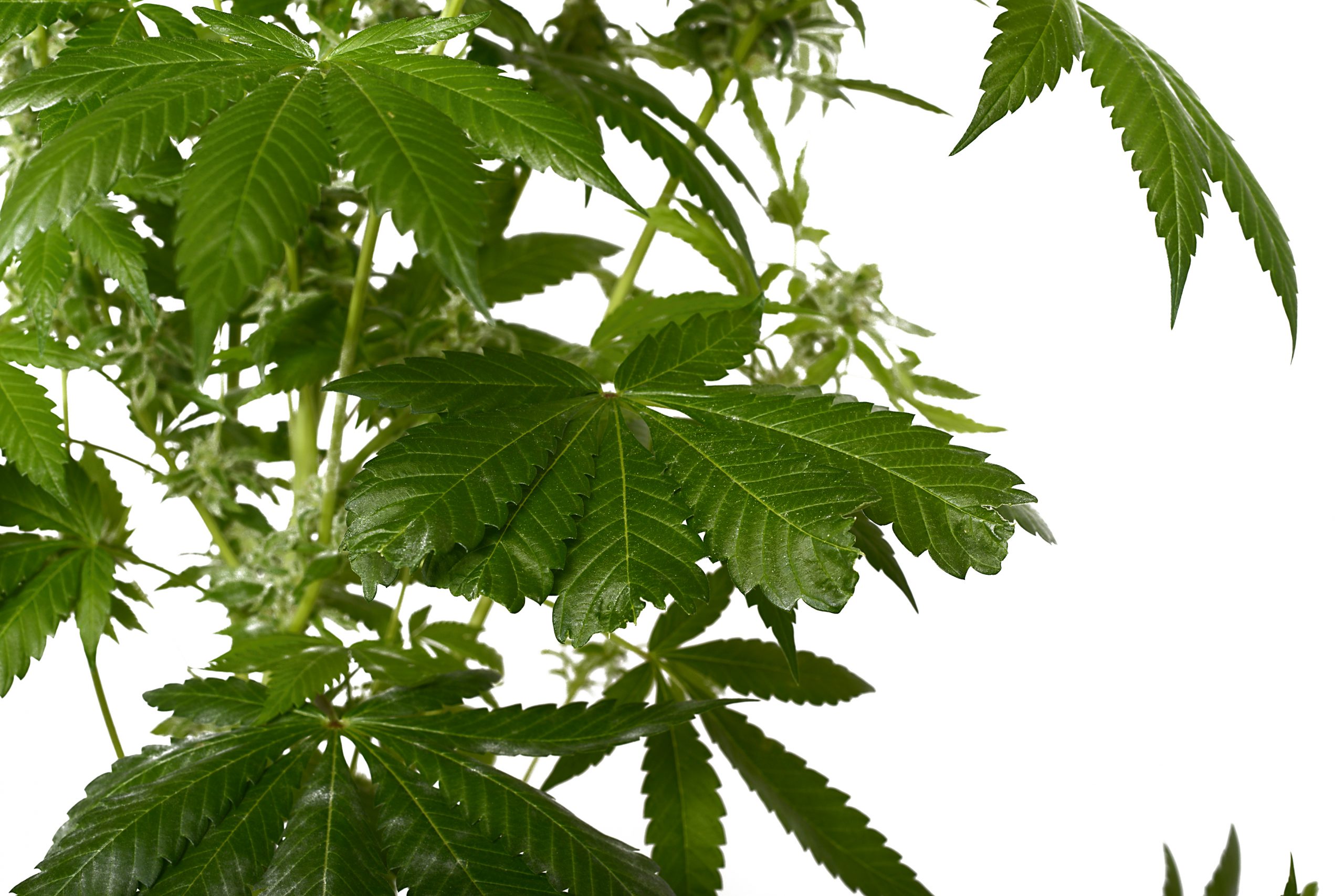
Fimming Step By Step
- Select the topmost growth tip of your plant;
- Gently pull back the small leaves around the tip and take the green tip between your thumb and index finger;
- Remove the top 75 to 80% of the tip in a single, clean cut;
- Repeat the technique on other growth tips your want to branch out.
Some growers prefer to FIM using a curved razor. This creates cuts with a specific curved angle to direct the plant’s new growth sideways. However, opinions differ on whether this improves results compared to straight cuts.
Combining Fimming And Other Techniques
If you really want to make the most out of your grow, you can try to combine fimming with other proven grower’s techniques. Any technique depending on bushy plant structure, including the SCReen Of Green technique (SCROG) are great ways to maximize your harvest.
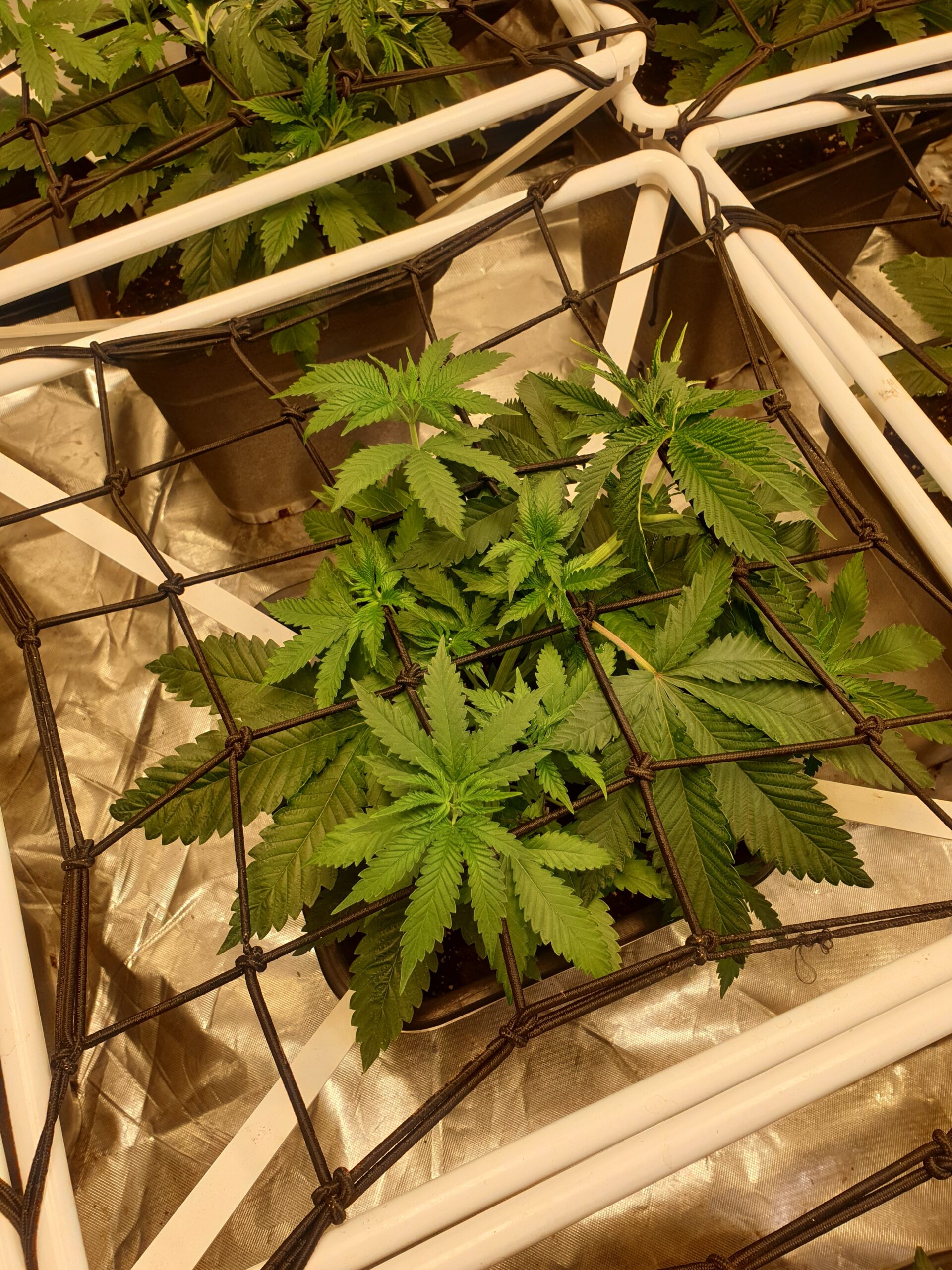
Plants grown using the Sea Of Green method (SOG) can also profit from multiple tips per stem, filling out the productive surface of the canopy with buds and thus increasing yields per square metre.
Fimming More Than Once
Multiple FIM sessions are an option, but keep in mind that this is a high stress technique. That means you’ll probably have to extend the vegetative stage of your grow, giving your weed plants more time to recover after each round of fimming. In this regard, going for some fast-growing, stress-tolerant genetics like the Skyrocket strain might be good for giving this technique a try.
Also, whether you choose to FIM, top, SCROG or SOG your cannabis plants, always take the time to read up so you know what you’re doing. This will avoid stress, infections, and other things you can do without.









